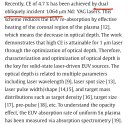My SMIC Q3 earnings call notes
$2.1B revenue (all time high), up 14% QoQ and 20.5% Margin, Profit $170m
Expect 2% growth QoQ in revenue with 18-20% Margin
Domestic customers restocked and built up inventories to increase market share.
Foreign customers slowed down due to geopolitics (& tariffs?), they shifted some orders to Q2.
Price for 12-inch wafer increased -> blended ASP increased (more 12-inch, less 8-inch in mix)
BCD demand remains high due to AI including AIOT (like on TV & 3C) for power control
Added 21k wpm (high value added value) added in Q3 increased blended ASP.
Could not complete all the Q3 demand so had to extend delivery. Q4 is normally light quarter.
Expecting 8-inch equivalent capacity to reach 958k by end of the year.
837k in Q2, 884k in Q3 to ~950k in Q4
Adding 51k 12-inch wafer in Q3 and Q4 (works out to be ~115k 8-inch)
Accelerated deployment of power device to support NEV industry.
SMIC’s goal is to captured 1/3 of semi fab orders transferred to China from Chinese OEMs that
onshore a portion of their supply chain to domestic fabs.
Each fab must do at least 3 process node (28, 40, 65nm for example)
For each process node, can do it well across different platforms (HV, MCU, BCD, CMOS, DDIC, LCD driver)
In terms of overcapacity, ideal to be 85% utilization industry wide, but industry is at 70%
But SMIC itself is not having enough capacity as it’s utilization is at 90%
In order to win customer, needs to make sure it can fulfill all the need of customers.

